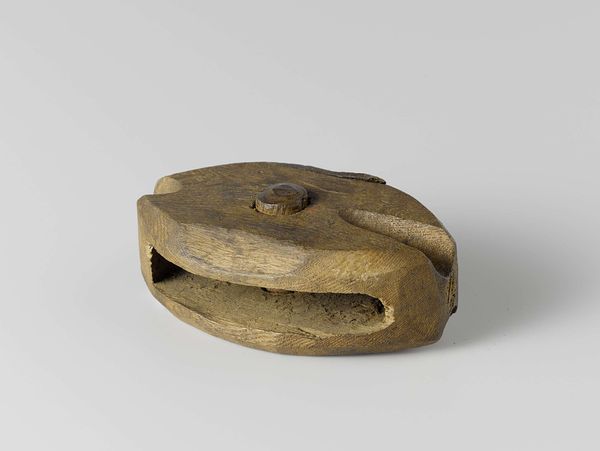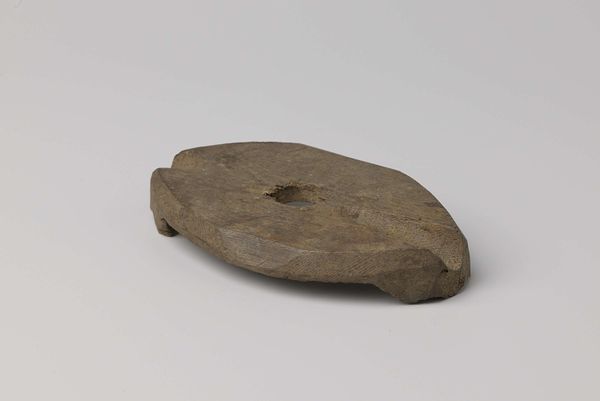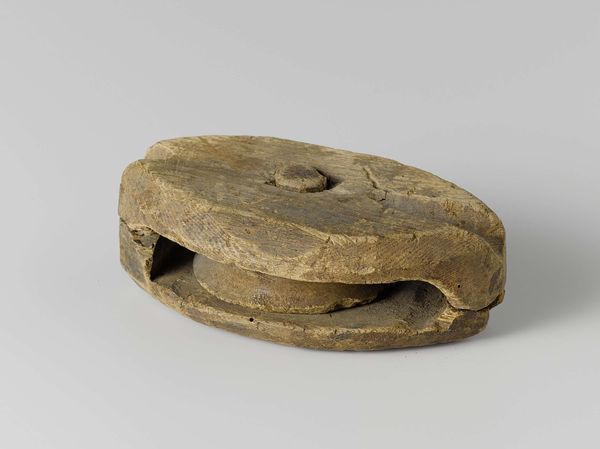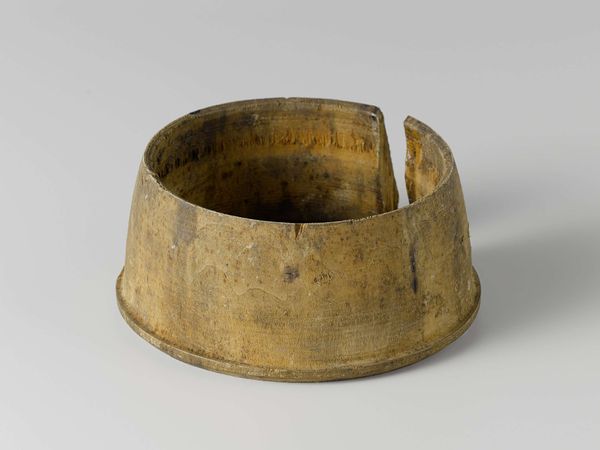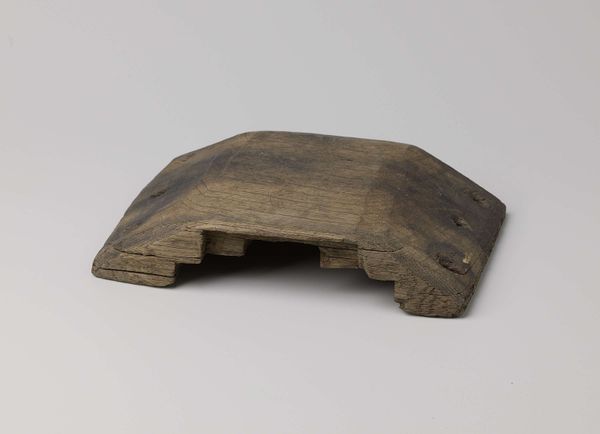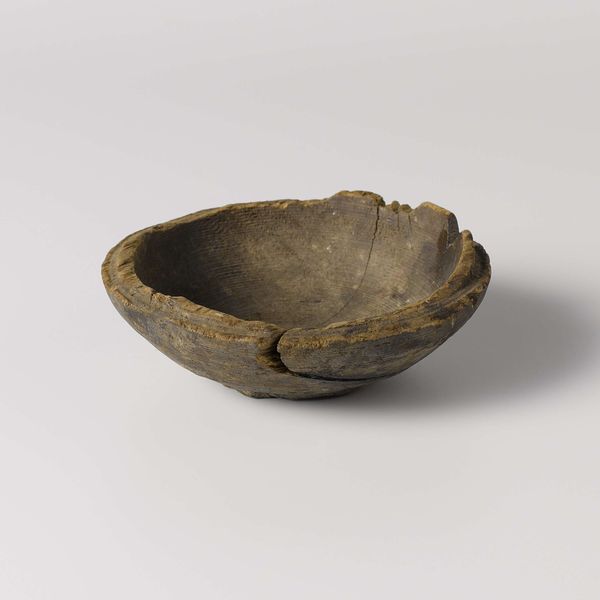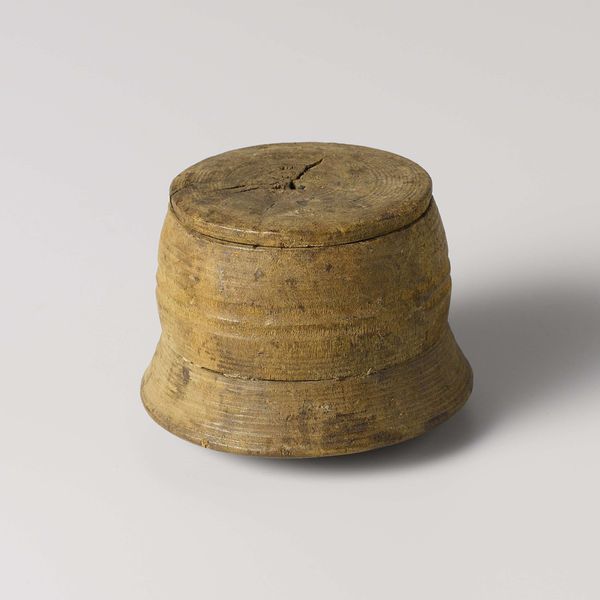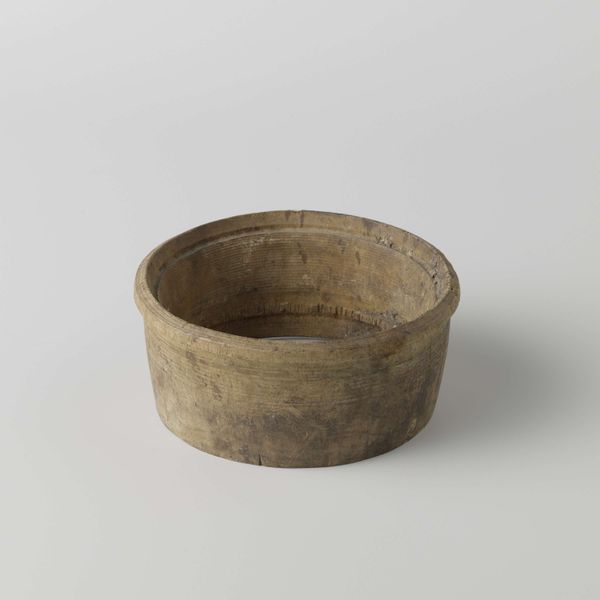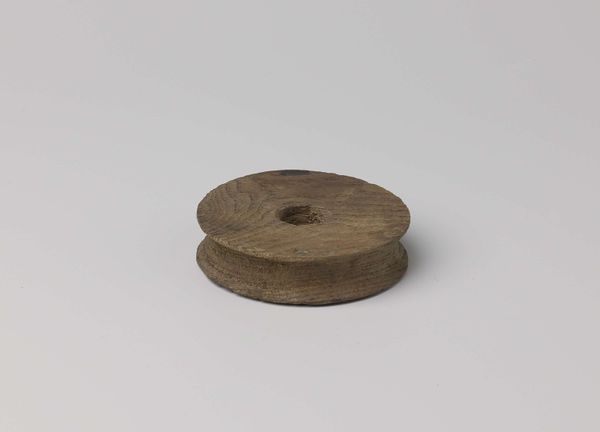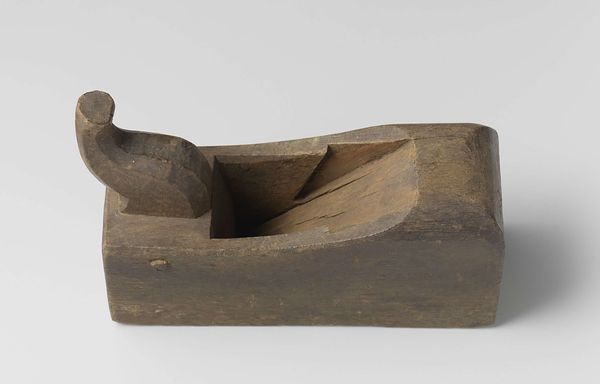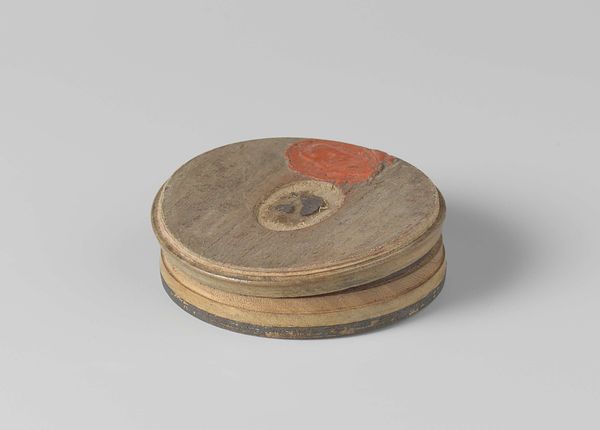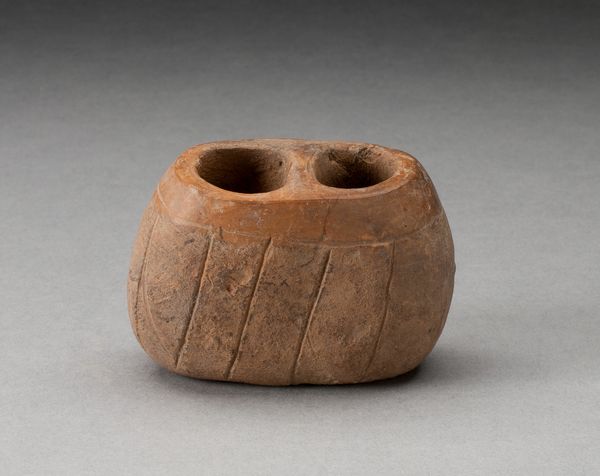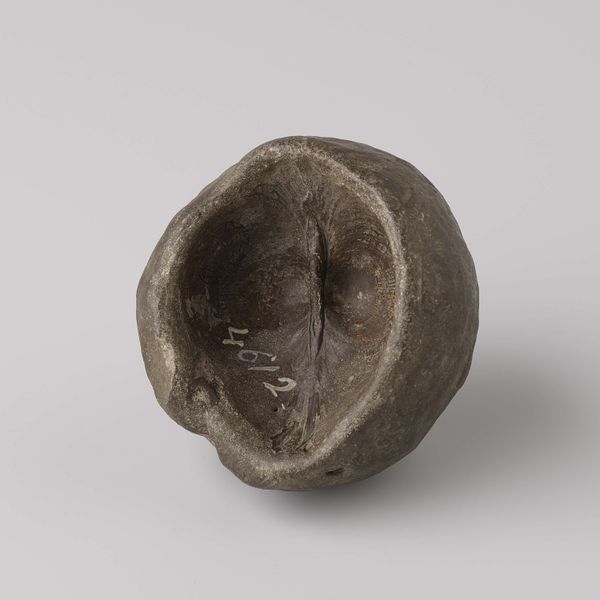
carving, sculpture, wood
#
medieval
#
carving
#
sculpture
#
wood
Dimensions: length 15.1 cm, width 9.2 cm, depth 3.3 cm, diameter 8.7 cm
Copyright: Rijks Museum: Open Domain
Editor: Here we have the "Eénschijfsblok," or single-sheaved block, carved out of wood around 1590 to 1596 by an anonymous artist. It's deceptively simple, isn't it? It just looks like an ordinary object, a tool of some kind, but it's presented as sculpture. What stories do you think an object like this can tell us about the period? Curator: Well, let's think about labor, about power. A pulley block like this speaks directly to the mechanics of 16th-century life. Who was using this? Was it for ships, for construction, or something else? Its very existence implies a hierarchy – someone giving the orders, someone doing the heavy lifting. What gender roles were at play? Were women involved in operating such devices? And consider the materials; wood was a common resource, but who had access to the best wood, to the skill needed to carve it? Editor: So you're suggesting that even a utilitarian object like this reflects societal inequalities? Curator: Precisely! We can unpack the narratives embedded in something seemingly so simple. Consider the global context: The Netherlands were a major maritime power at this time, engaging in trade and, of course, colonialism. A pulley like this wasn’t just moving objects; it was implicated in moving goods, people, and unfortunately, often enslavement. How might that affect our reading? Editor: That gives me a lot to think about. I hadn't considered it in relation to global systems of power. Curator: It’s essential to consider objects like these as active participants in the social and political landscape, not just passive tools. They speak volumes if we're willing to listen critically. Editor: I will never look at an "ordinary object" the same way again. Thank you! Curator: And I am grateful to reflect on the ethics that undergird the every day with you!
Comments
No comments
Be the first to comment and join the conversation on the ultimate creative platform.
